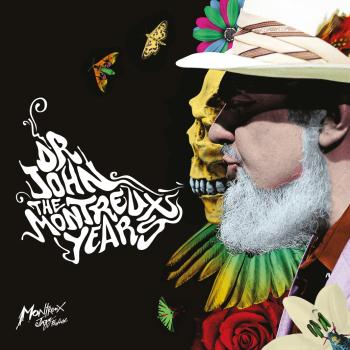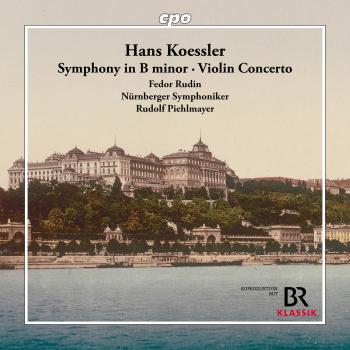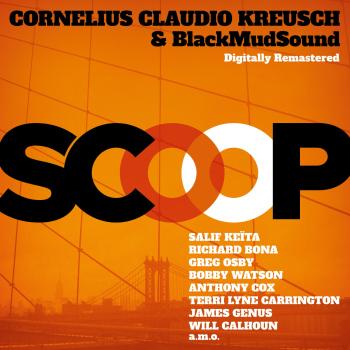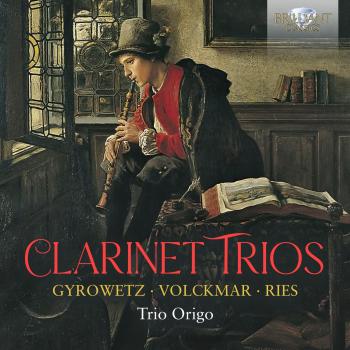
Clarinet Trios: Gyrowetz, Volckmar, Ries Trio Origo
Album info
Album-Release:
2025
HRA-Release:
24.11.2025
Label: Brilliant Classics
Genre: Classical
Subgenre: Chamber Music
Artist: Trio Origo
Composer: Adalbert Gyrowetz (1763-1850), Adam Valentin Volckmar (1770-1851), Ferdinand Ries (1784-1838)
Album including Album cover Booklet (PDF)
- Adalbert Gyrowetz (1763 - 1850): Trio for Clarinet, Cello and Fortepiano, Op. 43 in E-Flat Major:
- 1 Gyrowetz: Trio for Clarinet, Cello and Fortepiano, Op. 43 in E-Flat Major: I Allegro Moderato 12:08
- 2 Gyrowetz: Trio for Clarinet, Cello and Fortepiano, Op. 43 in E-Flat Major: II Andante 05:16
- 3 Gyrowetz: Trio for Clarinet, Cello and Fortepiano, Op. 43 in E-Flat Major: III Allegretto 05:16
- Adam Valentin Volckmar (1770 - 1851): Trio for Clarinet, Cello and Fortepiano in B-Flat Major:
- 4 Volckmar: Trio for Clarinet, Cello and Fortepiano in B-Flat Major: I Andante Con Moto - Allegro Poco Vivace 07:00
- 5 Volckmar: Trio for Clarinet, Cello and Fortepiano in B-Flat Major: II Poco Adagio 04:49
- 6 Volckmar: Trio for Clarinet, Cello and Fortepiano in B-Flat Major: III Finale. Allegretto 03:59
- Ferdinand Ries (1784 - 1838): Trio for Clarinet, Cello and Fortepiano, Op. 28 in B-Flat Major:
- 7 Ries: Trio for Clarinet, Cello and Fortepiano, Op. 28 in B-Flat Major: I Allegro 09:16
- 8 Ries: Trio for Clarinet, Cello and Fortepiano, Op. 28 in B-Flat Major: II Scherzo. Allegro Vivace 04:33
- 9 Ries: Trio for Clarinet, Cello and Fortepiano, Op. 28 in B-Flat Major: III Adagio 04:21
- 10 Ries: Trio for Clarinet, Cello and Fortepiano, Op. 28 in B-Flat Major: IV Rondo. Allegro Ma Non Troppo 06:25
Info for Clarinet Trios: Gyrowetz, Volckmar, Ries
The history of large-scale works for clarinet, cello and piano began with the two trios composed by Ludwig van Beethoven in 1797 and 1803. Soon after Beethoven’s trios were published, several of his contemporaries were also inspired to compose trios for these instruments.
Adalbert Gyrowetz (1763–1850), a prolific Bohemian composer active in Vienna, wrote chamber music that aligned with the elegant, balanced style of the Classical period. His clarinet trios often follow the model popularized by Beethoven and others: clarinet, cello, and piano. They highlight the clarinet’s lyrical qualities while maintaining a conversational equality among the three instruments. Gyrowetz’s music tends to favor charm and clarity over dramatic intensity, providing insight into the salon culture of early nineteenth-century Vienna.
Johann Heinrich Volckmar (1770–1840), though less widely remembered, contributed to the clarinet trio genre with works that blend Classical formality with touches of early Romantic color. His trios display a clear sense of melody, often assigning the clarinet bright, song-like lines while the piano provides both harmonic support and moments of virtuosity. Volckmar’s writing exemplifies how regional composers outside the central canon engaged with the clarinet’s expressive potential, even if their works remained on the periphery of mainstream concert life.
Ferdinand Ries (1784–1838), a student and close associate of Beethoven, represents a later stage in the trio tradition. His clarinet trios show a more Romantic sensibility, with broader structures, heightened contrasts, and more demanding instrumental writing. Ries imbues his works with dramatic flair and lyrical warmth, reflecting both Beethoven’s influence and his own individual voice. Together, the trios of Gyrowetz, Volckmar, and Ries trace the clarinet’s evolution from Classical elegance to Romantic expressivity within the chamber music setting.
Played on period instruments by the Trio Origo. Trio Origo was formed for a performance of Beethoven’s Trio Op.11 in 2004 when its members were students of the Sibelius Academy. The trio has since then focused on performing Classical and Romantic works on period instruments. Trio Origo’s recording of two trios by Beethoven was released in 2020 on Brilliant Classics (BC, 96215).
Trio Origo
Trio Origo
was formed for a performance of Beethoven’s Trio Op.11 in 2004 when its members were students of the Sibelius Academy. The trio has since then mainly focused on performing Classical and Romantic works on period instruments.
Asko Heiskanen
first studied the clarinet in his hometown of Kuopio, Finland and later on at the Sibelius Academy and the Geneva Conservatory of Music. He also pursued further studies in historical clarinet and chalumeau with Lorenzo Coppola at the Catalonia College of Music in Barcelona. Heiskanen has been successful in competitions, most notably in 1995 when he won first prize in the Crusell Clarinet Competition. He has performed as a soloist with various orchestras and as a chamber musician in many European music festivals. Heiskanen is also a member of the Tapiola Sinfonietta.
Jussi Seppänen
is a versatile cellist who moves with ease between the cello section of the Finnish National Opera, chamber music and various early music groups, ao. the Finnish Baroque Orchestra, the Helsinki Baroque Orchestra and Baccano. He studied cello at the Tampere Conservatory, the Sibelius Academy and the Amsterdam Conservatory.
Jerry Jantunen
started his piano studies at Lappeenranta Music Institute at the age of five. He continued with Hui-Ying Tawaststjerna, Eero Heinonen and Tuija Hakkila at the Sibelius Academy in Helsinki, and graduated in 2007. He also studied the fortepiano with Tuija Hakkila. Jerry Jantunen was a laureate of the Musica Antiqua Brugge fortepiano competition in 2001. He performs as a soloist and chamber musician on both
historical and modern instruments.
Booklet for Clarinet Trios: Gyrowetz, Volckmar, Ries











